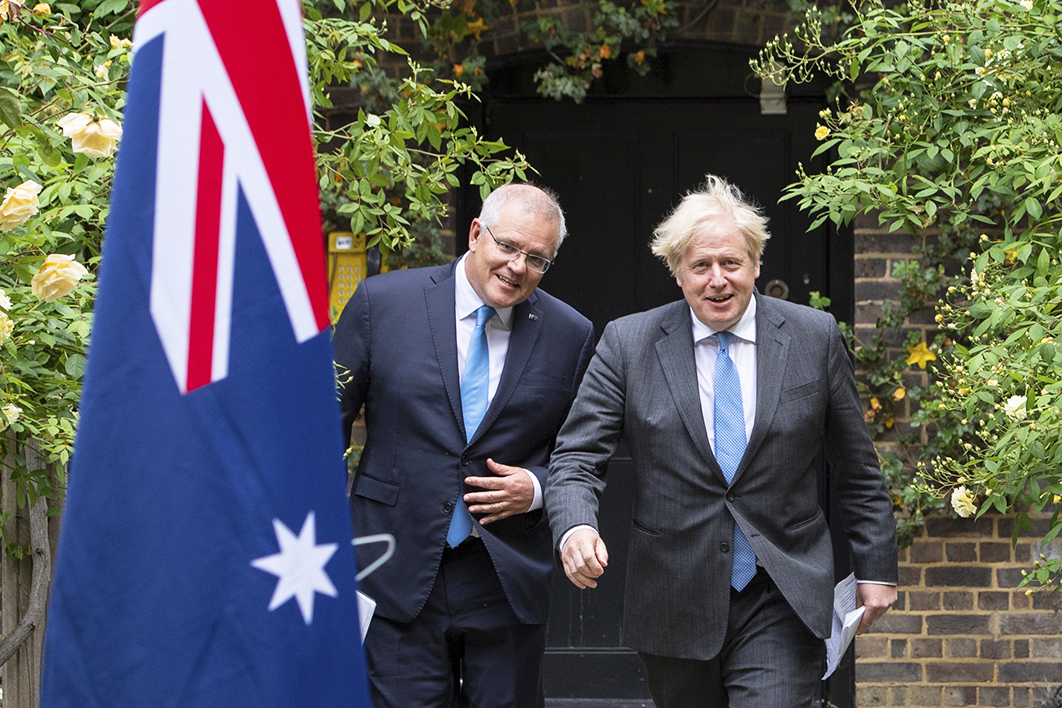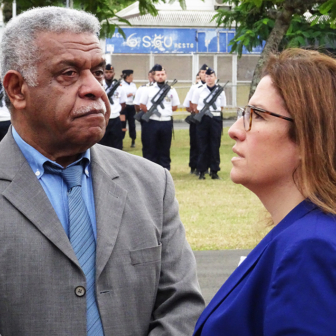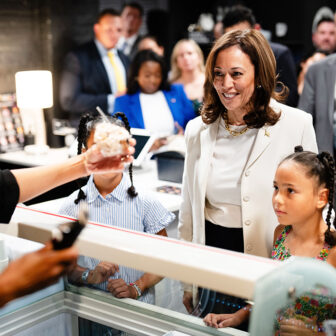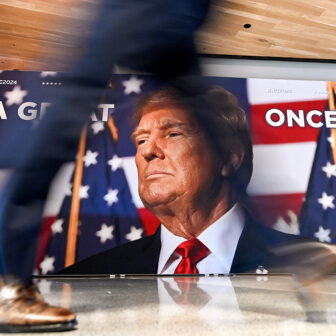Last August prime minister Scott Morrison announced an agreement between his government and vaccine developers that would put Australians “among the first in the world to receive a Covid-19 vaccine.” Yet now, as we enter the second half of 2021, Australia ranks last among thirty-eight OECD nations, with less than 5 per cent of the population fully vaccinated.
What went wrong? How did a country with an internationally envied record of managing the pandemic and a history of successful vaccination programs come to lag so dreadfully? And what can be done before more Australians die unnecessarily and more lockdowns damage the economy and erode wellbeing?
The evidence shows that the blame rests squarely with the Morrison government and its advisers (assuming their advice is being followed). Only a substantial change in their attitudes, policies and communication efforts will reverse the vaccination trends and enable Australia to open its state and international borders permanently.
Efforts to develop a vaccine against the SARS-CoV-2 coronavirus began early and have been spectacularly successful. By July 2020, when I looked at progress in international vaccine development, 139 vaccines were in development and twenty-six undergoing human trials. Omitting Chinese efforts, at least six vaccines from major pharmaceutical companies were in either phase 2 or phase 3 clinical trials.
By then, the United States, Canada, Britain and other countries were making deals to ensure access to a range of vaccines. The Australian government’s approach was much more cautious; rather than “back every horse in the race,” bets were made on just two vaccines and the new mRNA vaccines were totally ignored.
Scott Morrison’s claim in August that Australians were at the head of the vaccine queue was based on a letter of intent for the purchase of thirty million doses of AstraZeneca vaccine, with CSL to manufacture at least some of these, and a big bet on the University of Queensland vaccine, with a heads of agreement signed with CSL for the production of fifty-one million doses.
There is every reason to believe that these purchasing decisions were based as much on cost considerations as on a need for national self-reliance, and that they ignored advice to ensure access to a full range of vaccine types. The AstraZeneca vaccine costs about US$4 per dose, considerably less than the mRNA vaccines made by Pfizer (US$20) and Moderna (US$32–37), which have more challenging storage and transport requirements. While local production is an admirable goal, it is not clear how CSL could simultaneously manufacture two different vaccines at the same facility given the large-scale production requirements.
It is public knowledge that negotiations between the Department of Health and Pfizer in July 2020 didn’t result in a purchase agreement at that time (that didn’t come until November, with a purchase of ten million doses). Persistent rumours suggested that Australia turned down the possibility of forty million Pfizer doses, to be delivered early in 2021, after haggling over costs and intellectual property.
By the end of February this year Australia was watching with great interest as US president Joe Biden and his team successfully turned around the Trump vaccine rollout fiasco and as Britain and Israel were implementing effective national vaccination campaigns.
Australians were initially happy to wait, even as Biden and Johnson went into overdrive — after all, the situation Down Under was very different, with infections under control and time available for full regulatory approval (rather than emergency authorisation) and planning a gold-standard vaccine rollout.
By this stage Australia had orders for twenty million Pfizer doses to arrive in 2021 and for 3.8 million AstraZeneca doses to be manufactured offshore (300,000 had already arrived), with fifty million more to be manufactured by CSL in Australia. After problems with the molecular clamp technology using HIV-derived proteins, though, there was to be no University of Queensland vaccine. As a result, Australia was now looking for more vaccines but faced a long queue for the Pfizer and Moderna mRNA vaccines, with perhaps as many as a billion doses already spoken for by other nations.
A few lucky Australians, the prime minister among them, had received their first jab. Morrison and Hunt heroically announced a target of four million vaccinations by the end of March and full vaccination by October. With a potential arsenal of seventy million jabs, enough for thirty-five million people, these goals seemed realistic.
But things started to go wrong very quickly. By the beginning of April it was clear that the Morrison government had over-promised and underdelivered. The European Union blocked exports of AstraZeneca vaccine, citing its own needs, and expected supplies were not arriving at vaccination centres. CSL production was under way but not in full swing. The government had already walked back the “all Australians vaccinated by October” pledge on 11 March.
And then, on 8 April, the government announced it had accepted the Australian Technical Advisory Group on Immunisation’s advice that Pfizer should now be the preferred vaccine for people aged under fifty because of the risk of blood clots from the AstraZeneca vaccine.
Since then, the vaccination program has spiralled further out of control, fuelling anger and frustration among state and territory leaders, despair among healthcare providers, and increasing vaccine hesitancy in the population.
The litany of failures is long and growing: unjustifiable delays in vaccinating population groups at highest risk (such as people in aged and disability care and their carers, and remote Indigenous communities); the inability to commit to vaccine deliveries in terms of both timing and quantities; the absence of effective communications and public education campaigns; and, most critically, a lack of transparency in government actions and decisions. All this has been aggravated by failures in hotel quarantine — yet another area of federal government responsibility that has been botched or, more accurately, ignored.
Many of the problems stem from the fact that the federal government (in contrast to state and territory governments) has little or no experience or expertise in delivering health services. Large sums have been spent on contractors and subcontractors to deliver vaccines and consultancy firms to advise on how to do this, often without first going to public tender and with no public scrutiny.
Unable or unwilling to admit to problems and tackle them promptly, the Morrison government has lost all the advantages that accrued from earlier lockdowns. Under its original goal, some twenty-two million doses would have been delivered by now and everyone in the top priority groups would be fully vaccinated. Even under the revised goal, more than ten million doses would be in Australians’ arms. That would have gone a considerable way towards blunting the impact of the Delta variant.
According to this week’s figures, the current vaccination gap is 4.7 million doses. Based on the current seven-day rolling average of 111,600 doses, it will take eleven more months to vaccinate all Australians (including children).
Some efforts have been made to deal with the problems. At the beginning of June, Lieutenant General John Frewen was announced as the head of the National Covid-19 Vaccination Task Force, a step described by one commentator as the federal government defaulting to the one implement it completely controls. Morrison chose to describe this as a “completely new organisational structure for getting a whole-of-government effect on a very big problem” and highlighted this by renaming the taskforce Operation Covid Shield.
Frewen has since released week-by-week vaccine allocations through to the end of the year, which should assist planning in the states and territories. But vaccine supplies will be constrained at least until the end of August, depending on how many people refuse the AstraZeneca vaccine. Supplies may also be affected by continuing outbreaks of infection that increase demand by states and territories over that allocated.
By mid September the supply of some 2.2 million doses each week is expected to be totally made up of mRNA vaccines, both Pfizer and Moderna. Australia’s initial twenty million Pfizer doses have apparently been brought forward a little and an extra twenty million have been ordered, to arrive before December. An agreement to secure twenty-five million doses of Moderna was announced in May, but the vaccine is yet to be approved by the Therapeutic Goods Administration. An agreement to purchase Novavax (a protein-based vaccine) also apparently exists; but phase 3 clinical trials have yet to conclude, so hopes for its availability in 2021 are very optimistic.
The rollout is now heavily reliant on state vaccination centres, general practitioners and Commonwealth-funded GP respiratory clinics. The case has been made that significantly more GPs need to be recruited to the Pfizer program, that more pharmacies should be involved, and that urgent attention must be given to vaccinating remote Indigenous communities.
The government’s medical experts have done a terrible job of allaying fears about the risks of vaccination and stressing the urgency of getting completely vaccinated, leaving opportunities for misunderstandings and false anti-vaccine claims. Scott Morrison’s “it’s not a race” rhetoric further clouded the message.
Until now, the federal government has made a virtue of following expert advice, even if that advice has not been well-communicated. But Morrison’s recent statement that people under forty could access AstraZeneca vaccine after consultation with their doctor — made in defiance of expert advice, without any input from national cabinet, and ahead of any consultation with the medical community — represents a major departure, worsening vaccine confusion and hesitancy and blindsiding GPs.
Meanwhile, Morrison and his ministers misrepresent the situation in Britain, for instance, by claiming that high rates of vaccination have not prevented infections and hospitalisations from the Delta virus. This ignores the reality that, while Delta infections are increasing, only 7.8 per cent of new Delta cases are among double-vaccinated Britons. Only very small numbers of vaccinated people are hospitalised and dying in the United States, too.
Further evidence about what vaccination can achieve can be found much closer to home in the results of NSW tracking and tracing. After a party in Western Sydney — described as a superspreader event — twenty-four of the thirty attendees tested positive for Covid-19. The remaining six were all vaccinated.
Any delay in getting Australians fully vaccinated inevitably hinders our ability to provide excess vaccines to countries in the Pacific and Southeast Asia. Morrison has said he remains committed to ensuring early vaccine access for these neighbouring nations through commitments at the G7 and through COVAX, the international scheme to ensure equitable access to Covid-19 vaccines.
In his press conference after this week’s national cabinet meeting, Scott Morrison said he was “very confident that Australians won’t give in to the frustration, that they will continue to show the great application and effort and patience that we know is required of all of us… We’ve got to keep going Australia.” The surest way to have Australians “keep going” is for the government to get going. At the moment it is mired in a mess of its own making. •
The publication of this article was supported by a grant from the Judith Neilson Institute for Journalism and Ideas.





